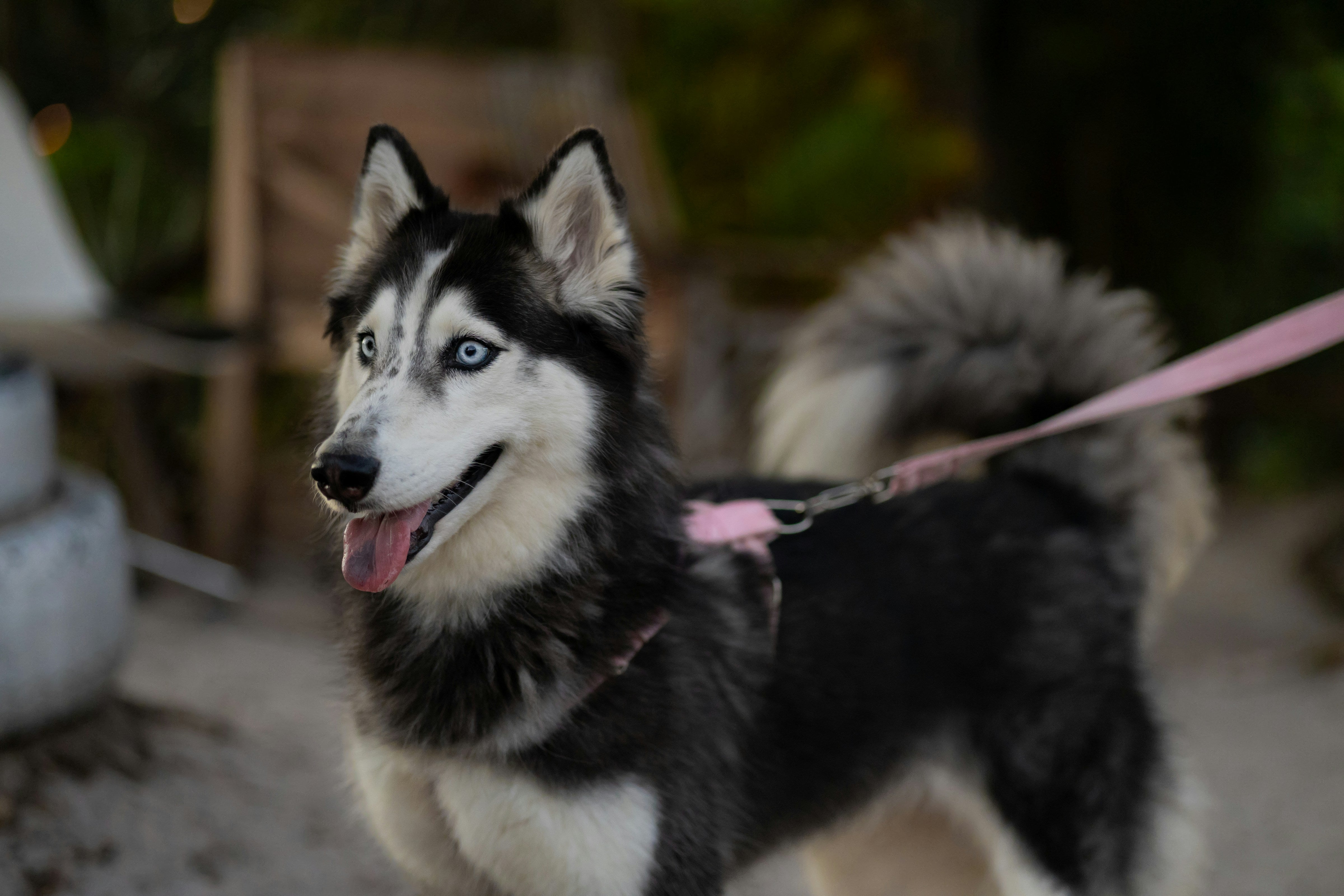The buzz of a bee is a classic sound of summer, but for a curious pup, it can lead to a painful encounter. Seeing your dog stung by a bee is a stressful moment for any pet parent. While most stings result in only minor discomfort, some can cause severe reactions.
Knowing how to respond quickly and what signs to watch for is key to keeping your furry friend safe. This guide will walk you through everything you need to know, from immediate first aid to recognizing when it’s time to call the vet.

Understanding Bee Stings in Dogs
A dog’s curiosity is often what gets them into trouble with stinging insects. They might poke their nose into a flowerbed or try to snap at a buzzing bee, leading to a sting. The venom injected causes immediate pain and a localized reaction. While a single sting is usually not dangerous, multiple stings or a sting inside the mouth or throat can be a medical emergency.
What do I do if my dog has been stung by a bee?
First, stay calm. Your dog will pick up on your anxiety, so a composed approach is best. Move your dog to a safe area to prevent more stings. Try to locate the sting site and, if visible, remove the stinger by scraping it out with a credit card or your fingernail. Avoid using tweezers, as squeezing can release more venom.
Is a dog bee sting an emergency?
Most bee stings are not emergencies and can be managed at home. However, it becomes an emergency if your dog has a severe allergic reaction (anaphylaxis), is stung multiple times, or is stung in the mouth or throat, which can cause swelling that blocks their airway
Are dogs allergic to bee stings?
Yes, just like people, some dogs can have an allergic reaction to bee stings. This can range from mild hives to a severe, life-threatening anaphylactic reaction. A dog may not have a reaction the first time they are stung but can develop a sensitivity, making subsequent stings more dangerous.
Common Areas Where a Dog Can Be Stung by a Bee
A dog’s inquisitive nature means stings often happen in predictable places.
-
Dog stung by bee on mouth: Stings here are concerning because swelling can obstruct the airway. Watch for excessive drooling, difficulty breathing, or coughing.
- Dog stung by bee on face: The face and muzzle are common targets. Swelling is typical, but if it’s rapid or extensive, it’s a cause for concern
- Dog stung by bee on eye: A sting near the eye requires immediate veterinary attention to prevent damage to the eye itself
- Dog stung by bee on ear: The ear flaps can swell significantly, causing discomfort.
- Dog stung by bee on tongue: Like a sting in the mouth, a sting on the tongue is an emergency due to the risk of airway blockage from swelling.
- Dog stung by bee on leg: A sting on the leg may cause limping or reluctance to put weight on it.
- Dog stung by bee on paw: Paws are a frequent spot for stings, often from stepping on a bee. Your dog might lick or chew the paw incessantly.
- Dog stung by bee on head: Similar to facial stings, monitor for significant swelling, especially near the neck or throat

Identifying Reactions and Symptoms
Knowing what to look for is crucial in the minutes and hours after a sting:
Dog stung by bee swelling and swollen face
Localized swelling is the most common reaction. A swollen face is a frequent sign, even if the sting was elsewhere.
Dog stung by bee allergic reaction
Signs of a serious allergic reaction include difficulty breathing, widespread hives, vomiting, diarrhea, weakness, pale gums, or collapse. These symptoms constitute an emergency.
How long after a bee sting will a dog have a reaction?
Mild reactions appear almost instantly. Severe allergic reactions typically occur within 10-30 minutes but can be delayed for several hours. It’s important to monitor your dog closely for at least a few hours after a sting.
Dog stung by multiple bees: what changes?
Multiple stings are much more dangerous because they introduce a larger amount of venom into your dog’s system. This increases the risk of a severe toxic reaction and anaphylaxis, even in a dog that isn’t typically allergic. A dog with multiple stings should be taken to the vet immediately.
Immediate Steps to Take When Dogs Get Stung
What to do when dogs get stung by a bee
- Remove the stinger by scraping it out.
- Apply a cold compress or ice pack wrapped in a towel to the area for 10 minutes to reduce swelling and pain.
- Apply a paste of baking soda and water to the site to help neutralize the venom.
- Monitor your dog closely for signs of an allergic reaction.
What to do if a bee stings your dog
The steps are the same. The key is to act quickly to remove the stinger and soothe the area.
Dog stung by bee can’t find stinger: what now?
If you can’t find a stinger, it may have been from a wasp (which don’t leave stingers) or it may have already fallen out. Proceed with applying a cold compress and monitoring your dog.
Should I give my dog a Benadryl after a bee sting?
Many veterinarians recommend Benadryl (diphenhydramine) to help manage mild allergic reactions. However, never give any medications without professional guidance. Always consult your veterinarian before administering any medication to ensure the correct dosage and to confirm it's safe for your specific dog.
How much antihistamine can I give my dog?
The dosage depends on the dog’s weight and the specific antihistamine. Never guess the dose. Contact your vet for a precise recommendation. Ensure the product only contains diphenhydramine and no other active ingredients like decongestants or painkillers.
Special Cases and Variations
Dog stung by honey bee vs. dog stung by bumble bee vs. dog stung by carpenter bee
Honey bees are the only ones that leave their barbed stinger behind. Bumble bees and carpenter bees can sting multiple times. The venom and reaction are similar, but the key difference is the presence of a stinger.
Puppy stung by bee: extra precautions
Puppies are smaller and more vulnerable, so any sting should be taken seriously. Their immune systems are still developing, and a reaction could be more severe. It’s wise to call your vet for guidance immediately.
Wiener dog stung by bee: breed-specific concerns
While there are no major breed-specific concerns for Dachshunds (“wiener dogs”) regarding bee stings, their small size means a single sting can have a greater effect relative to their body mass. Monitor them just as you would any small dog.

Prevention and Long-Term Care
How to reduce bee encounters with your dog
Supervise your dog outdoors, especially around flowering plants. Teach your dog a “leave it” command to stop them from chasing insects. If you have a nest on your property, have it professionally and safely relocated.
Signs your dog needs a vet after a sting
Go to the vet immediately if you see severe swelling (especially on the face or neck), difficulty breathing, vomiting, diarrhea, weakness, or collapse. Also, seek veterinary care for multiple stings or stings inside the mouth.
Dog after being stung by bee: monitoring recovery
After a mild sting, the pain and swelling should subside within a few hours to a day. Keep an eye on the area to ensure it doesn’t become infected. If redness or swelling worsens after 24 hours, contact your vet.
Conclusion
A dog stung by a bee is a common but frightening event. By staying calm, removing the stinger, applying a cold compress, and monitoring your dog closely, you can handle most stings at home. The most critical step is to recognize the signs of a severe allergic reaction and act fast. When in doubt, never hesitate to contact your veterinarian. They are your best resource for ensuring your dog’s health and safety.






Leave a comment
This site is protected by hCaptcha and the hCaptcha Privacy Policy and Terms of Service apply.